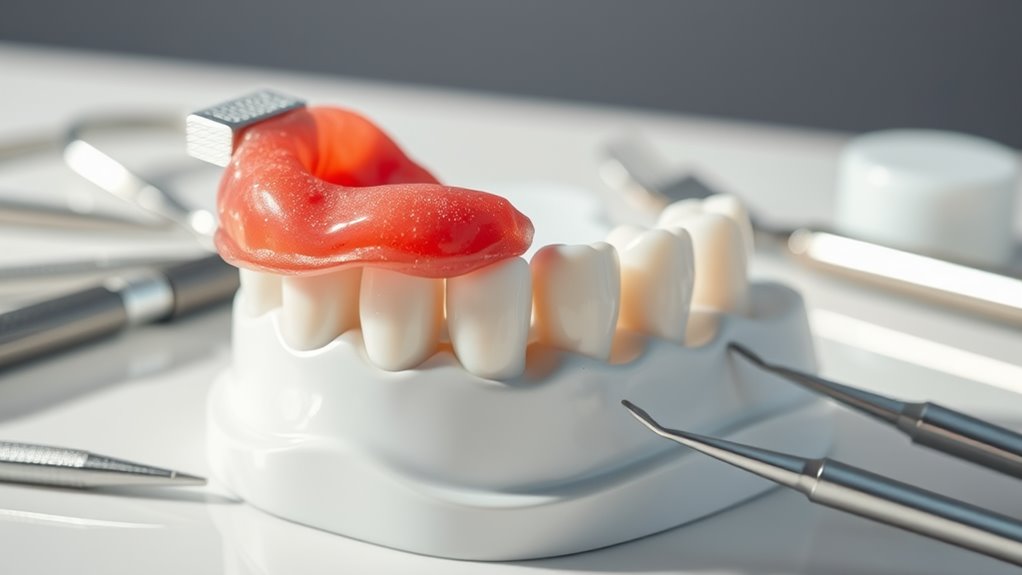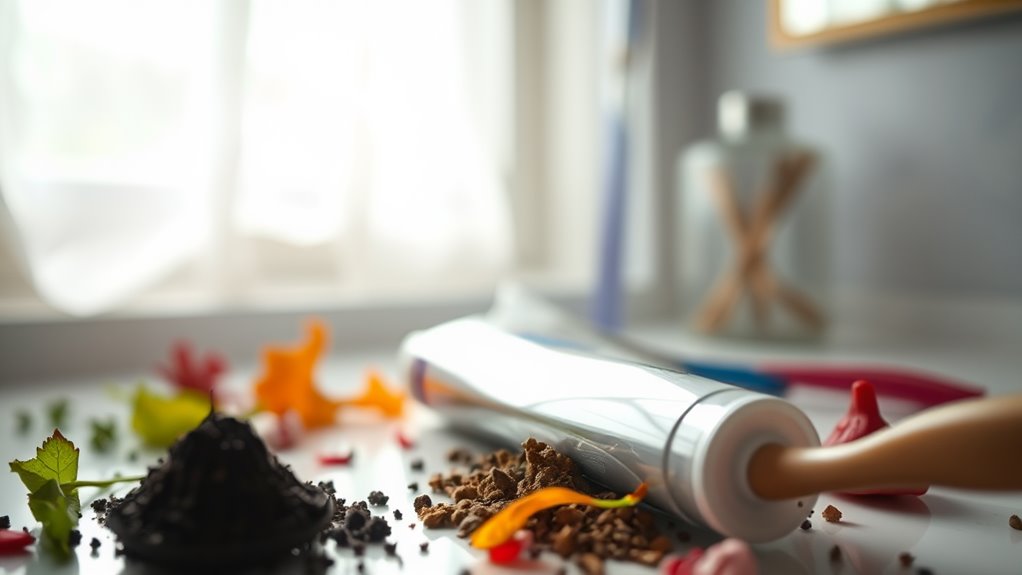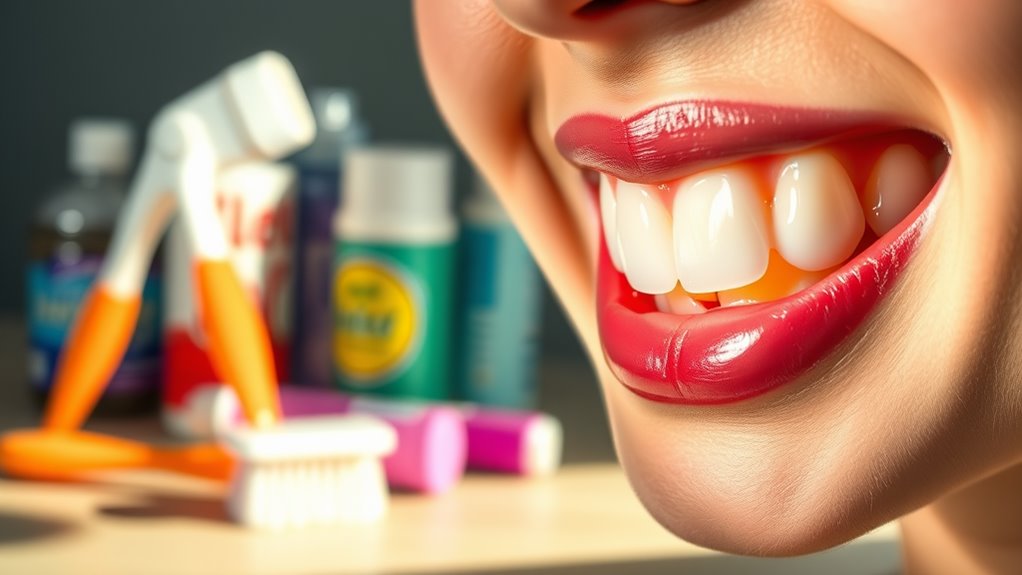The Best Way to Teach Flossing to Kids (Without Complaints)
Teaching kids to floss can be quite a challenge, but it doesn’t have to be a frustrating experience. By making it enjoyable and interactive, you can turn flossing into a fun daily routine. Consider incorporating games, colorful tools, and family involvement. These strategies can not only improve their skills but also cultivate a positive attitude towards dental hygiene. Curious about specific tips and methods to make flossing an exciting part of their day?
Understanding the Importance of Flossing
Flossing is a crucial part of maintaining healthy teeth and gums, yet many kids overlook this important step in their oral hygiene routine. Flossing for kids isn’t just about removing food scraps; it helps prevent cavities and gum disease.
Those tight spaces between teeth can trap plaque, leading to problems if ignored. Encourage your child to floss daily by explaining how it keeps their smile bright and pain-free. When they understand its importance, they’ll be more likely to embrace this habit. Daily flossing reduces inflammation and helps ensure healthier gums, which can make the practice more appealing.
Making flossing part of their routine ensures healthier teeth and a lifetime of smiles. Start today—every little bit helps!
Making Flossing Fun With Games
To help kids embrace flossing, adding a fun element can make a big difference.
Consider turning flossing into a game! You can create a timer challenge where they race against the clock to floss all their teeth. Or play a flossing song and have them show off their best dance moves while they floss.
Create a reward chart to track their progress, with stickers for each successful session. These games not only make flossing enjoyable but also encourage consistency. Additionally, teaching kids about the importance of dental health from a young age can foster lifelong habits.
Choosing the Right Tools for Kids
When it comes to flossing, choosing the right tools can make all the difference for your kids. Look for fun flossing alternatives and kid-friendly options that spark their interest. Engaging flossing tools can turn a chore into a fun activity that your little ones will actually enjoy! Consider incorporating simple tips like colorful flossers to create excitement and ownership in their dental hygiene routine.
Fun Flossing Alternatives
How can you make flossing more enjoyable for your kids? Choosing fun and engaging tools can transform this chore into a game! Consider these alternatives to traditional floss:
| Fun Tool | Benefit | Kid Appeal |
|---|---|---|
| Floss Picks | Easy to handle | Fun shapes and colors |
| Flossers with Characters | Engaging designs | Favorite characters |
| Flossing Robots | Interactive and entertaining | High-tech excitement |
| Flavored Floss | Great taste | Makes flossing yummy |
| Light-Up Floss | Visual excitement | Glows in the dark |
Embrace these options and watch your kids light up at flossing time!
Kid-Friendly Floss Types
Choosing the right floss for kids can make all the difference in their oral care routine.
Look for options designed specifically for children, such as flavored floss that adds a fun twist to flossing. Soft, nylon floss works well and is gentle on little teeth and gums. You might also consider floss picks, which are easier for small hands to maneuver.
Make sure the floss is the right thickness—too thick can be uncomfortable. Involve your kids in choosing their floss, letting them pick a design or flavor they like. This way, they’ll feel more excited about making flossing a habit!
Engaging Flossing Tools
While introducing engaging flossing tools can make the experience more enjoyable for your child, it’s essential to find options that suit their specific needs.
Look for colorful, character-themed flossers that spark their interest and excitement. Device-style flossers with handles can be easier to maneuver, especially for younger kids.
Consider flavored floss or fun, interactive flossing apps that celebrate each successful session. These tools not only encourage regular flossing but also turn it into a fun routine.
Setting a Positive Example
As you strive to teach your kids the importance of flossing, remember that your actions speak louder than words.
When they see you flossing daily, it reinforces that it’s a normal and essential part of oral care. Share your own flossing routine with them—make it a fun family activity!
Talk about how great it feels to have clean teeth. By demonstrating your commitment to dental health, you’re setting a powerful example.
Kids are more likely to adopt habits they see modeled, so show them that you prioritize flossing, making it a natural part of your family’s hygiene practices. Additionally, regular dental checkups can foster a positive dental experience that encourages lifelong oral hygiene habits.
Incorporating Flossing Into a Daily Routine
Making flossing a daily routine can transform it from a chore into a habit the whole family embraces. Start by choosing a consistent time, like after dinner or before bed. Together, create a fun atmosphere with music or a flossing dance-off! Remember, many studies suggest that while flossing can reduce plaque, its impact on preventing gum disease is still debated.
Here’s a simple schedule to get you started:
| Day | Flossing Time |
|---|---|
| Monday | After Dinner |
| Wednesday | Before Bed |
| Friday | After Breakfast |
Incorporate flossing into your daily life—it’ll soon feel like a natural part of your family’s hygiene routine.
Rewarding Progress to Encourage Consistency
To keep your kids motivated in their flossing journey, consider rewarding their progress with small incentives.
You might create a fun chart to track daily flossing, where each successful day earns a star. After a set number of stars, treat them to a small prize, like a favorite snack or a fun outing.
This approach not only reinforces positive behavior but also makes flossing feel less like a chore. Celebrate their consistent efforts and remind them that taking care of their teeth can be rewarding.
With these incentives, they’ll likely embrace good oral hygiene habits with enthusiasm.




